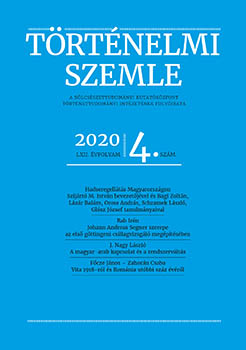
Koronázás a Német-római Birodalomban és Magyarországon a kora újkorban
This article offers a brief comparison of the coronations in early modern Germany and Hungary by examining the German and Hungarian coronation of Emperor/King Leopold II in 1790. I reconstruct the two coronations relying on two monumental printed sources: the detailed imperial coronation diary of 1790 (Diarium), and Sámuel Decsy’s History of the Hungarian Holy Crown and the Objects Related to It. The latter one provides a thorough description of the Hungarian coronation in general, and that of Leopold II in particular. The Holy Roman Empire was an elective monarchy, and so was Hungary until 1687, when the estates relinquished the right to elect the king. The transformation of Hungary into a hereditary monarchy did not change however that the coronation had to be performed by the diet. Similarly, the German election and coronation had to be prepared and executed by an exclusive corporate body, the electoral college. Both ceremonies had their own obligatory elements: the place, the actors, and the insignia, although there were alterations at times (e.g. a few coronations were held at Sopron instead of Pozsony [Bratislava]). In the Empire, the compulsory components of the rituals were codified in the Golden Bull of 1356, while no such legal prescriptions existed for the Hungarian coronation. The coronation ceremonies consisted of ecclesiastical and lay rituals. Apart from minor differences, the ecclesiastical part was rather similar. The lay part of the coronation, however, presented significant differences. The first lay ritual after the coronation was the creation of new knights, but in Hungary, the accolade was followed by two other lay ceremonies: the king took the coronation oath, then rode on a pile of soil called the “royal hill”, where he brandished his sword to the four cardinal directions. In both cases, a coronation feast closed the ceremony, but clear differences could be observed between the two banquets. In the Empire, the electors as holders of the high offices (e.g. arch-cupbearer) had to perform their symbolic tasks at the emperor’s table publically, and at the feast, the emperor’s table had to stand 6 feet higher than the electors’ tables, and everyone should dine at separate tables. By contrast, in Hungary, the banquet was held behind closed doors, and the participants were not physically detached from each other.
More...














